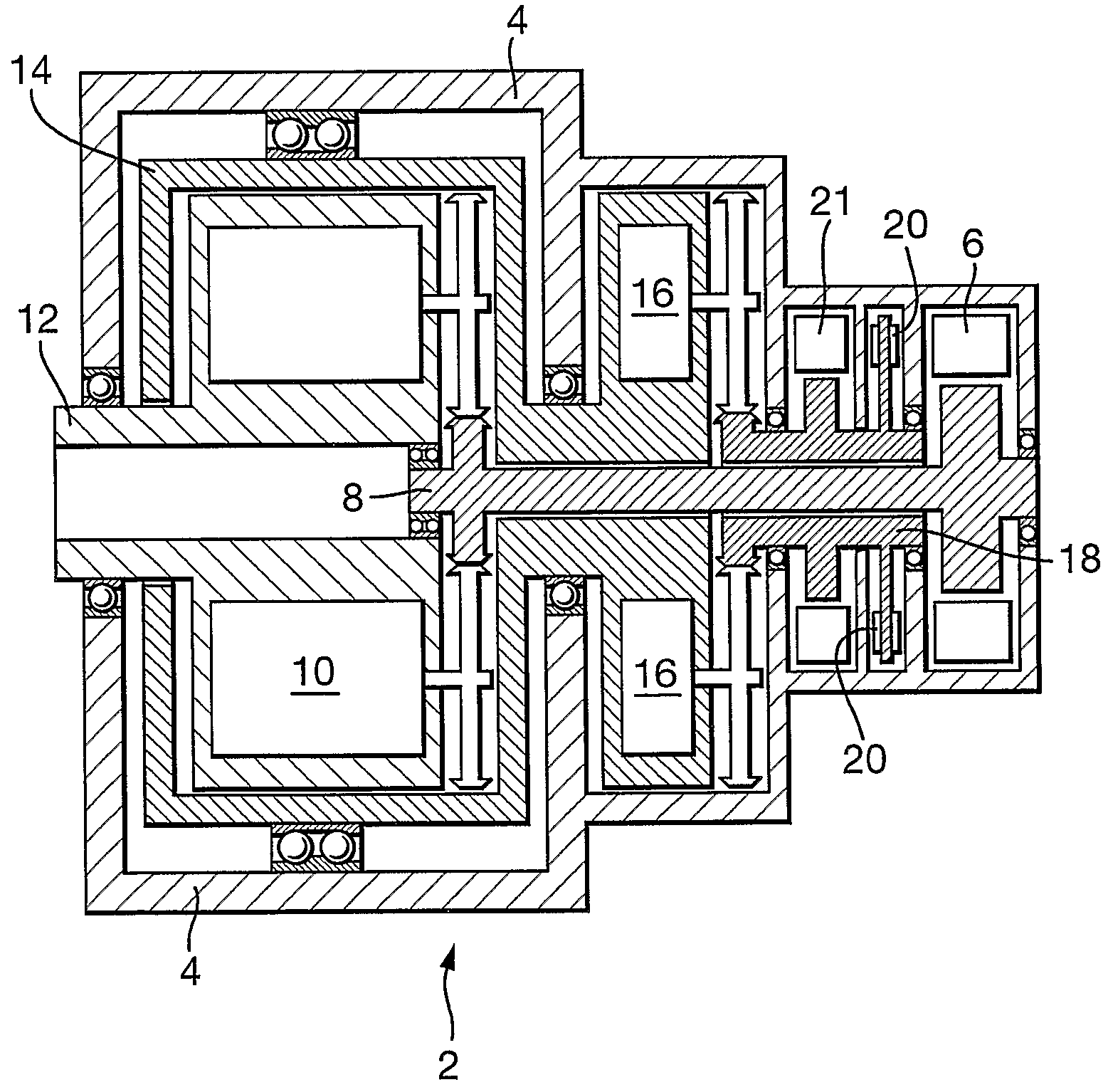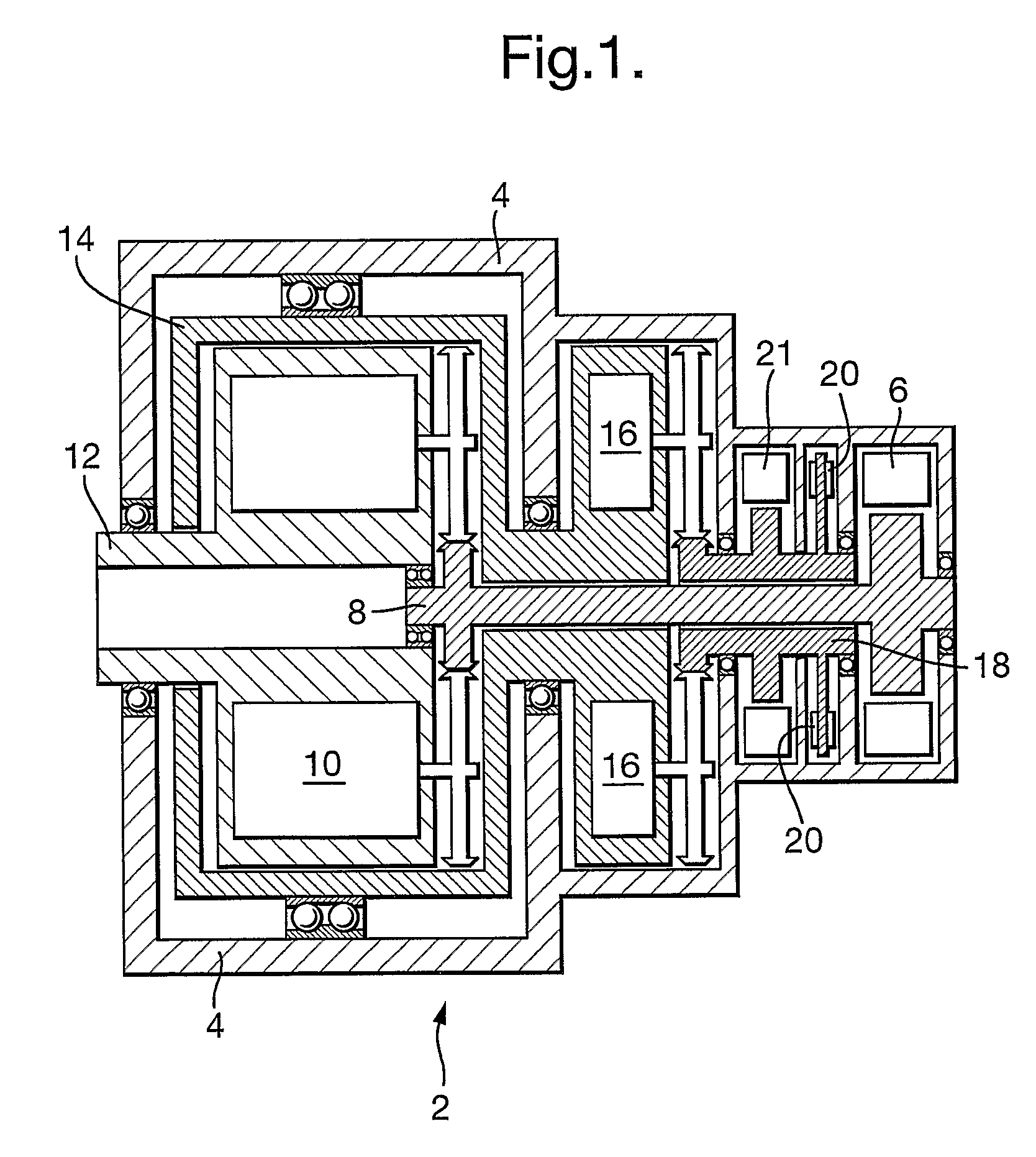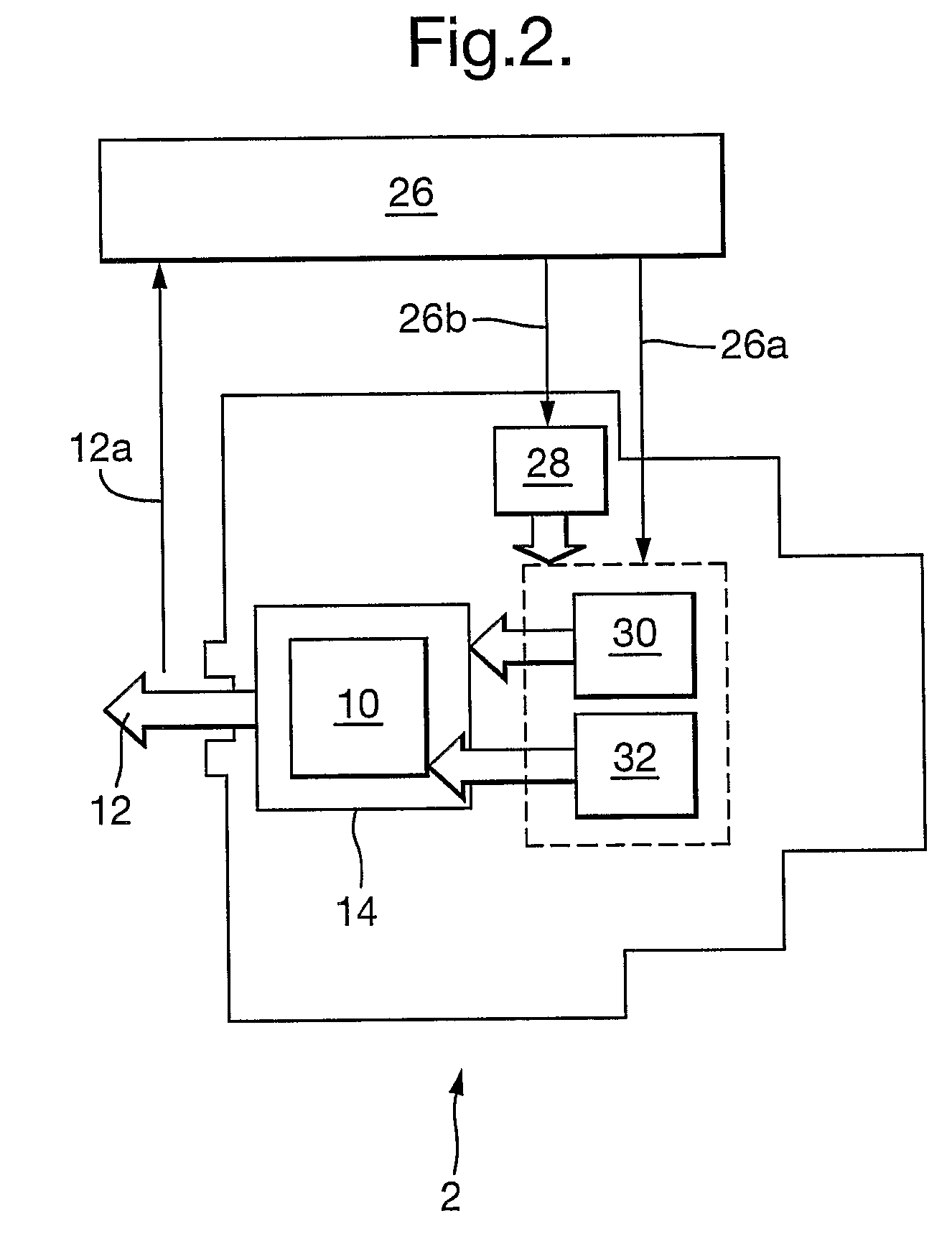Jam-tollerant actuator
a technology of electromechanical actuators and jamming, which is applied in the direction of wing adjustment, stopper details, aircraft transmission means, etc., can solve the problems of preventing the actuator from operating efficiently and/or safely, proposals suffer from various disadvantages, and failure-once systems
- Summary
- Abstract
- Description
- Claims
- Application Information
AI Technical Summary
Benefits of technology
Problems solved by technology
Method used
Image
Examples
first embodiment
[0059]FIG. 1 illustrates the invention relating to a reconfigurable jam-tolerant electromechanical rotary actuator 2 for use as the steering actuator of a nose landing gear on a large commercial passenger aircraft. The actuator 2 comprises an outer housing 4 which is fixed to the adjacent aircraft structure (not shown). The actuator has two distinct modes of operation. The first mode of operation is the primary, and normal, mode of operation. The second mode of operation is a secondary, and back-up or emergency (such as free-castoring), mode of operation.
[0060]The actuator 2 houses an electric rotary motor 6 with a motor shaft 8 coupling the motor with a first gearbox 10. The electric motor is a bi-directional brushless DC motor, with fault-tolerant winding as necessary, able to generate a maximum torque of about 27 Nm. The first gearbox 10 converts the low torque high speed rotary motion from the motor 6 into high torque low speed motion which is output at a primary output shaft 12...
second embodiment
[0076]As a variant of the above-described second embodiment, the first and second gearboxes may have different ratios, so that the second gearbox is back-driveable. This may result in the output torque being reduced in the second mode of operation. Thus, in the event of a complete power failure, the brake would release the housing of the first gearbox and the clutch would couple the output shaft and the housing of the first gearbox (the clutch being configured so that the clutch applies in the event of loss of electric power). The output shaft could then be rotated, and would back-drive the second gearbox and the second motor. If the actuator were used to drive the steering of the nose landing gear, the aircraft could then be allowed to free-castor. Damping of that motion may be provided by means of adding an electro-mechanical damping mechanism.
[0077]The actuator may be supplied to move a component on the aircraft other than the nose landing gear.
[0078]The control unit may include ...
PUM
 Login to View More
Login to View More Abstract
Description
Claims
Application Information
 Login to View More
Login to View More - R&D
- Intellectual Property
- Life Sciences
- Materials
- Tech Scout
- Unparalleled Data Quality
- Higher Quality Content
- 60% Fewer Hallucinations
Browse by: Latest US Patents, China's latest patents, Technical Efficacy Thesaurus, Application Domain, Technology Topic, Popular Technical Reports.
© 2025 PatSnap. All rights reserved.Legal|Privacy policy|Modern Slavery Act Transparency Statement|Sitemap|About US| Contact US: help@patsnap.com



